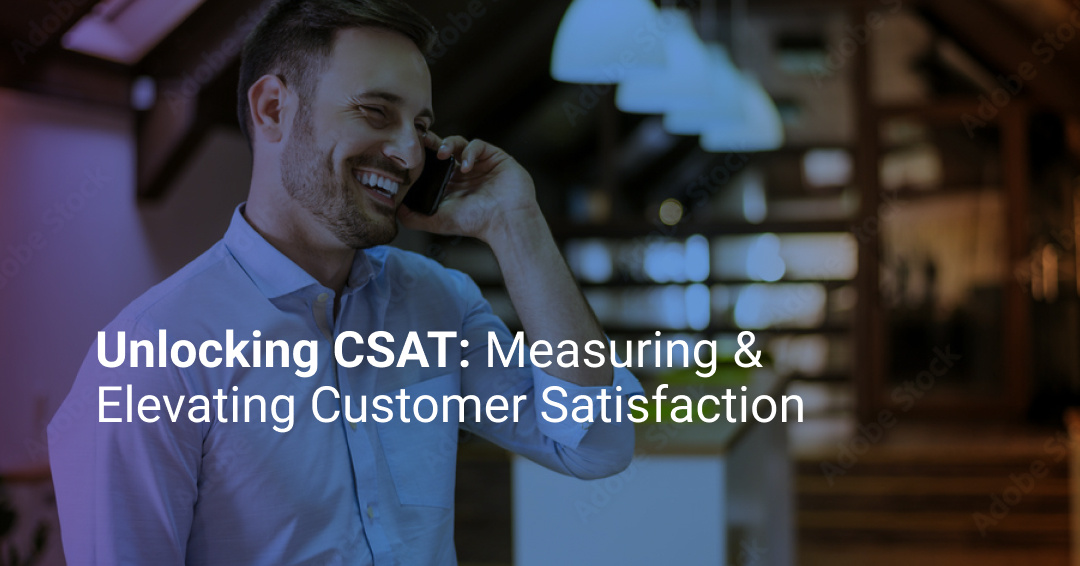What's CSAT Score? How to Measure and Improve It
Businesses across industries have changed or evolved over the decades, but one thing that has remained the same is that their growth is pretty much...
4 min read
![]() Mosaicx
:
December 21, 2022
Mosaicx
:
December 21, 2022

Organizations and their contact centers communicate with customers across several mediums in our current multichannel environment. To communicate properly, computers need to seamlessly interact with customers' phones to deliver customer support and maintain a consistent customer experience. Computer telephony integration (also known as CTI) can help.
In this blog, we’ll answer the question, “what is CTI?”. We’ll also examine how computer telephony integration optimizes call routing and automatic dialing to improve the overall customer experience.
Computer telephony integration is a technology that coordinates interactions between a computer and a telephone. As a software, computer telephony integration removes the need for physical phones in contact centers. It instead integrates a business’s contact center system with other business applications, like a CRM.
This integration streamlines call management and gives the contact center access to relevant information about the caller. So, when a customer calls, the agent can review data about them. Think about billing or purchase history and other past interactions with the company. This information offers valuable insight into the customer’s patterns and needs. This insight lets your business personalize the customer’s experience and offer relevant products or services.
The ability to see all pertinent customer data improves efficiency and streamlines contact center operations for both the customer and the agent. Alongside access to customer information, computer telephony integration directs customers to the next best action. This is accomplished through automatic dialing and call routing.
Automatic dialing is an example of computer telephony integration. With a software program, automatic dialing allows a computer to dial phone numbers from a list of customer information without agent support.
Businesses can program automatic dialing to meet their contact center needs. For example, let’s say a computer dials a number and a customer answers. A sophisticated program can detect if the phone has been answered and transfer the caller to a live contact center agent.
Or, a computer can play a recorded menu with options for further communication. This might include “press 1 to speak to a representative” or “press 2 to hear account information.”
Call routing, also known as automatic call routing or automatic call distribution routes calls according to a predetermined set of rules. In contact center operations, automatic call routing connects callers to the most qualified agent for assistance.
Computer telephony integration helps facilitate the call transfer. It can apply relevant customer information to inform the next action. Depending on the customer's needs, computer telephony integration will route to the most qualified agent to maximize first-call resolutions. The technology may also consider the customer’s past needs so they do not have to repeat any information. Thanks to seamless interactions, call routing streamlines service, which reduces customer hold times and constant transfers.
Computer telephony integration can streamline contact center communications, which improves customer support and the overall customer experience. Below are four ways computer telephony integration benefits the customer experience.
High call volume is a current and difficult issue for contact centers. In fact, 61% of business leaders reported an increase in inbound contact center calls over the past year. To cope with high call volume, businesses lean on computer telephony integration. Computer telephony integration decreases call time through computer pop-up windows that provide contact center agents with relevant caller information.
Pop-up capabilities gather customers’ names, contact information, and account histories. Contact centers that track this data reduce the need for agents to ask repetitive questions. They can dive straight into issue resolution.
Through the use of programs like interactive voice response (IVR), computer telephony integration can streamline the customer service process. One way to increase your first call resolution is through the automation of the verification process.
Computer telephony integration can compare the inbound phone number with internal customer data, which eliminates the need for a customer to provide their information again. This allows for streamlined service and accurate call routing.
Additionally, with access to previous customer service interactions, computer telephony integration can predict what a customer may need assistance with. For instance, consider a customer who typically calls on a specific day of the month to check their account balance. Computer telephony integration recognizes the pattern. With this pattern in mind, computer telephony integration routes the customer to the next best action, which streamlines service for the customer. This prediction ability, supported by AI, can help accurately route callers to the best resources for their anticipated needs.
Computer telephony integration solutions like IVRs allow customers to maneuver customer service integrations at their own pace, without needing an agent.
IVRs can listen to customer input and guide them to the solution they require. Some customer inquiries are solved without agent support. For example, if a customer wants to pay a bill or check on the status of an order. An IVR can automatically deliver the requested information in this scenario.
The ability for customers to use self-service processes makes for quick call resolution and streamlined service.
Computer telephony integration can support the customer experience beyond when a customer hangs up the phone. Computer telephony integration can provide organizations with vital contact center data, which can then be used to enhance future communications. Because a contact center’s telephones and computers are connected, computers can measure and report relevant data from customer calls. This data may include average wait times, what customers inquire about most, or what days and times have the highest call volume.
This data will help your business inform future customer interactions and personalize experiences. Understanding what customers inquire about most may be the perfect opportunity to develop FAQ resources. Knowing what days and times have the highest call volume informs staffing strategies. And keeping track of how long your customers wait to receive help can illustrate responsiveness.
Mosaicx can help companies understand what contact center solution best meets their needs. The Mosaicx IVA captures information from calls, which it shares with computer telephony integration tools. This data helps determine where the call should be routed and enables organizations to improve the efficiency of operations and customer experience.
Intelligent contact center integrations enable business leaders to evolve call routing and automatic dialing applications and embrace multichannel and omnichannel strategies. Computer telephony integration benefits customers through enhanced, personalized, streamlined service and experiences. Complementing this, computer telephony integration offers businesses the insight needed to amplify interactions, provide effective assistance and keep customers coming back.

Businesses across industries have changed or evolved over the decades, but one thing that has remained the same is that their growth is pretty much...

Customers have several major expectations from modern businesses, but none is as challenging as them reading your mind to anticipate support you...

The classical understanding of customer service is being significantly changed as more and more businesses shift toward artificial intelligence (AI)...